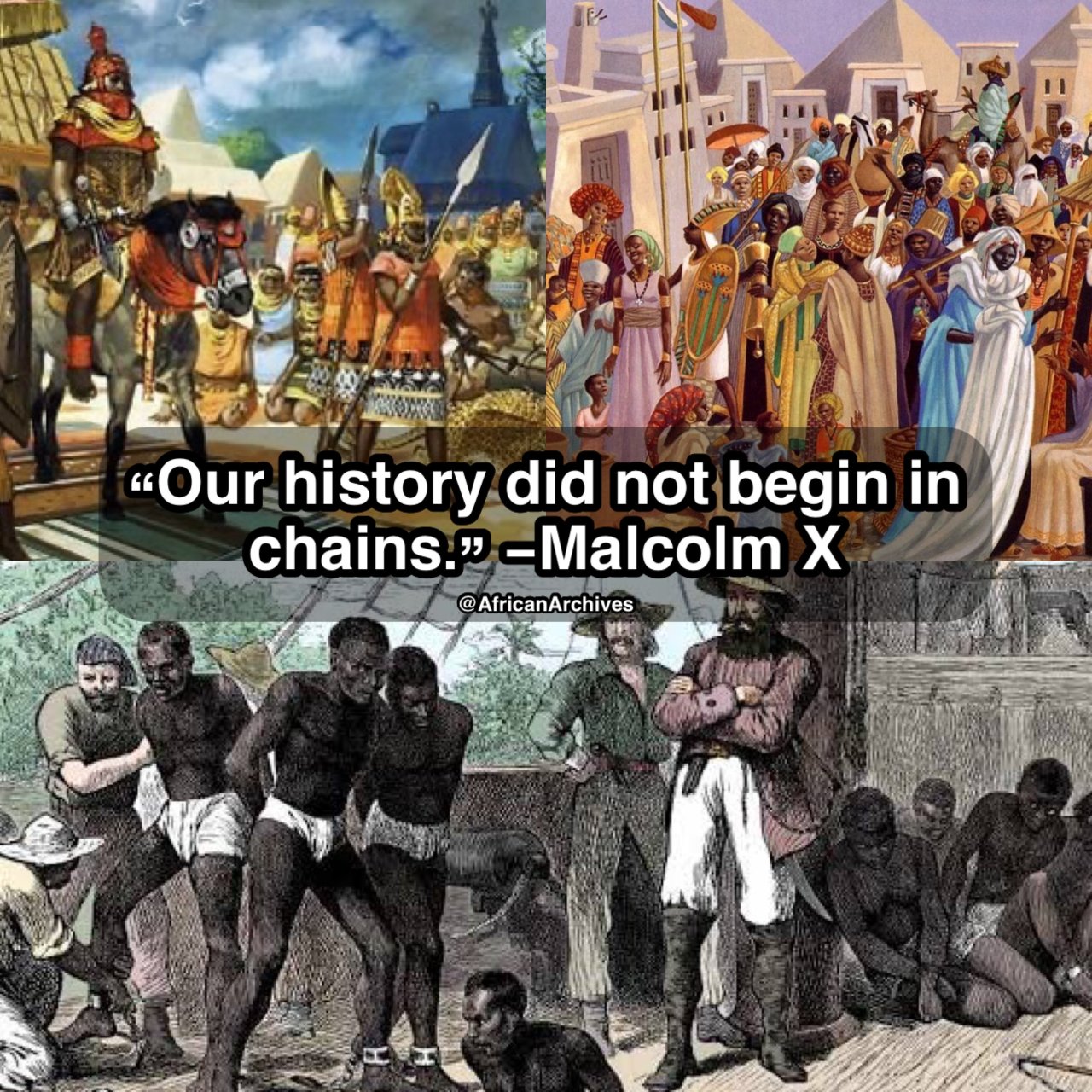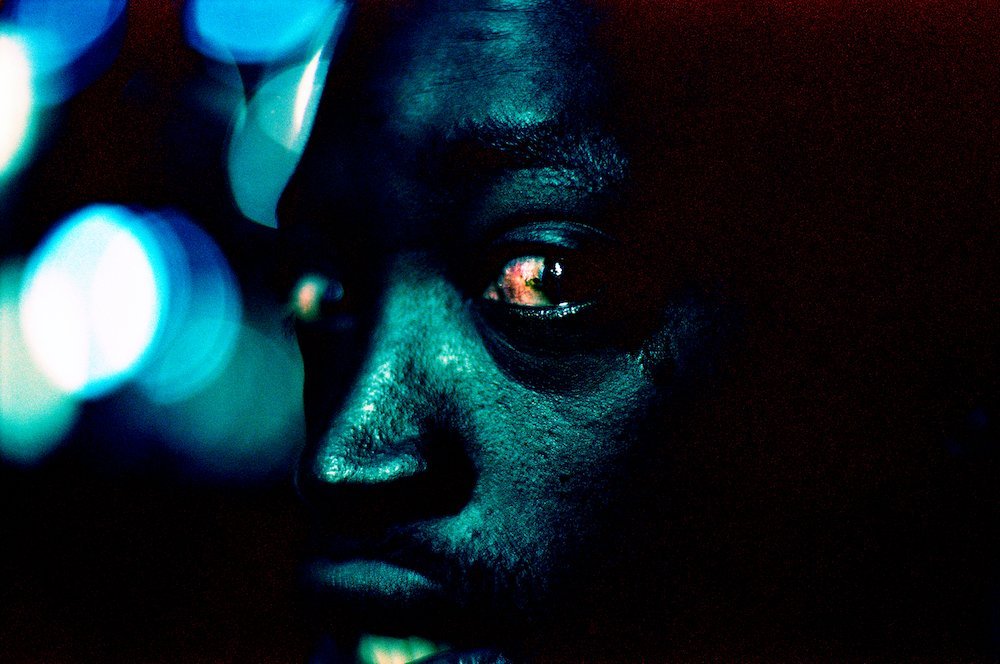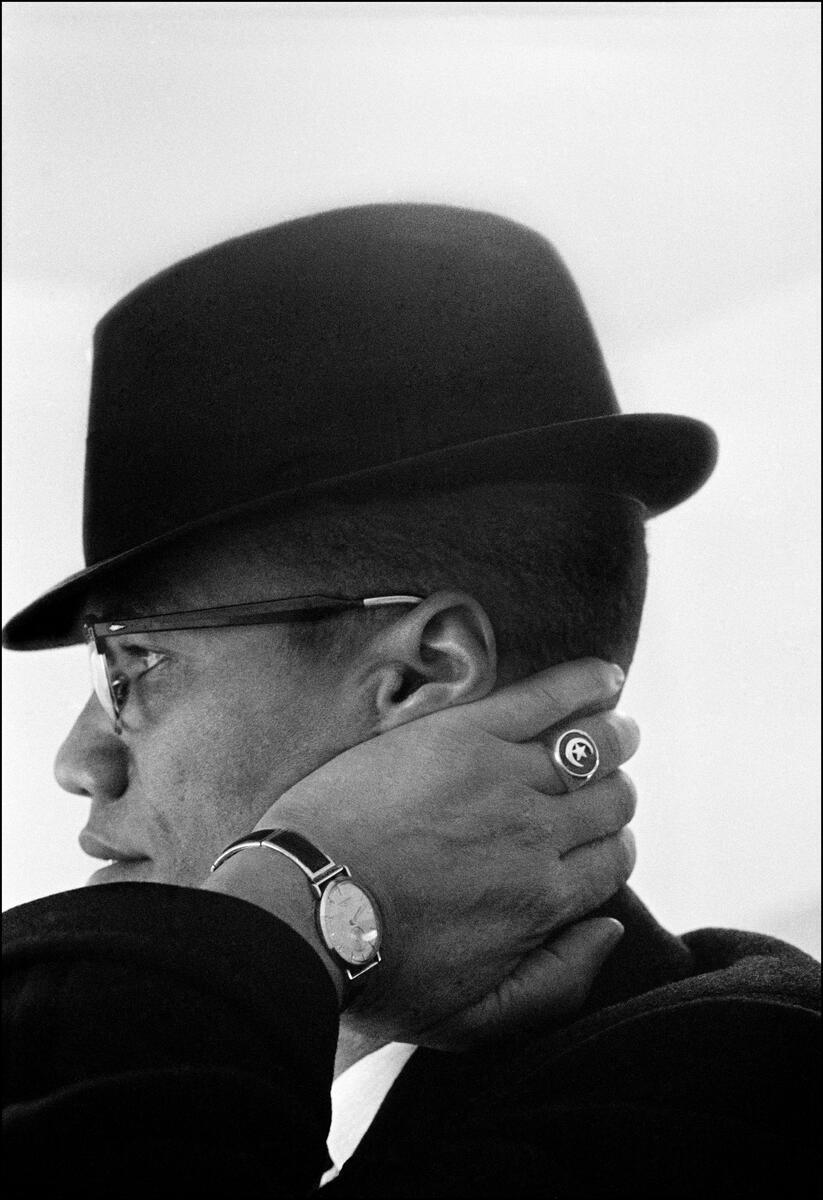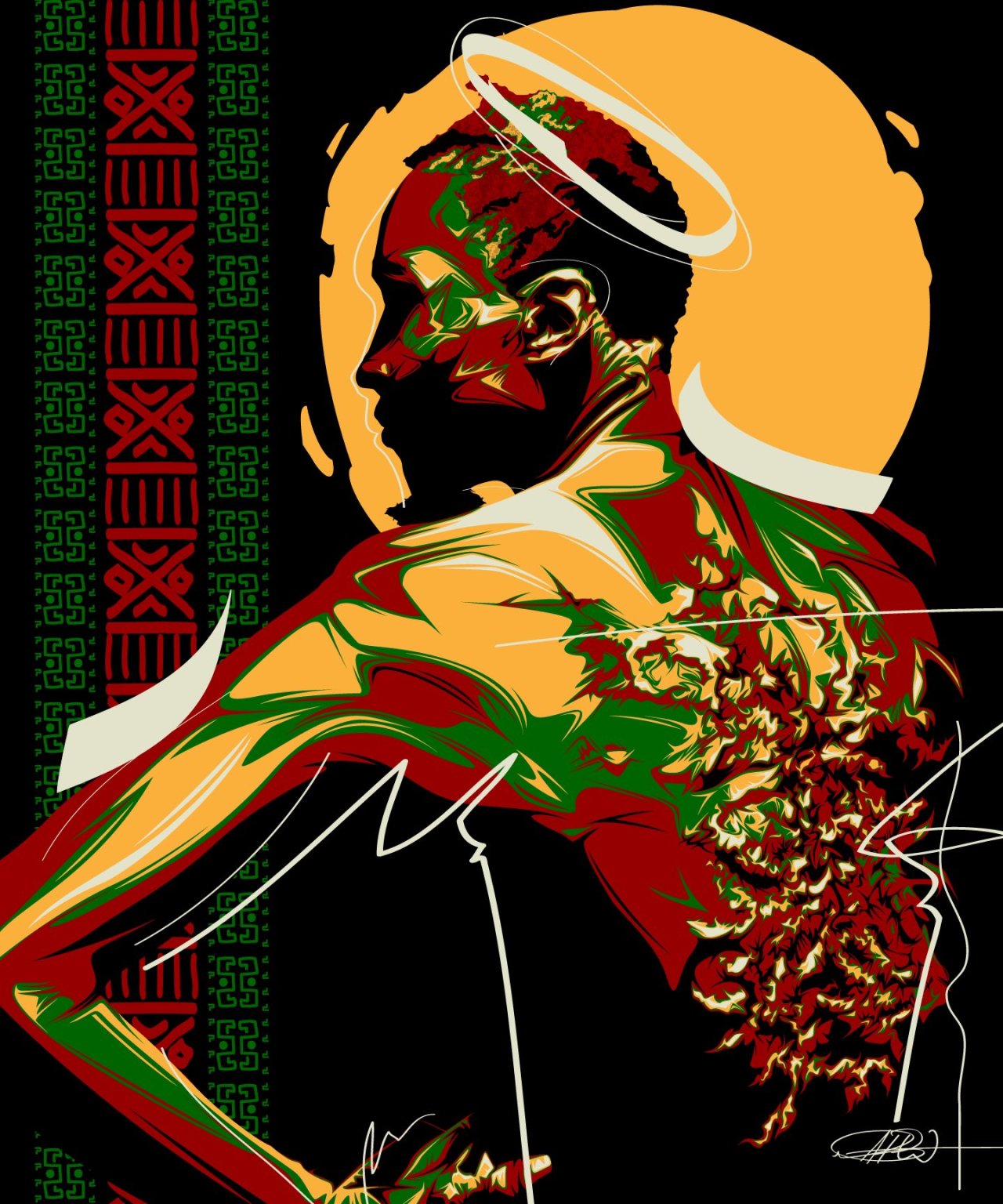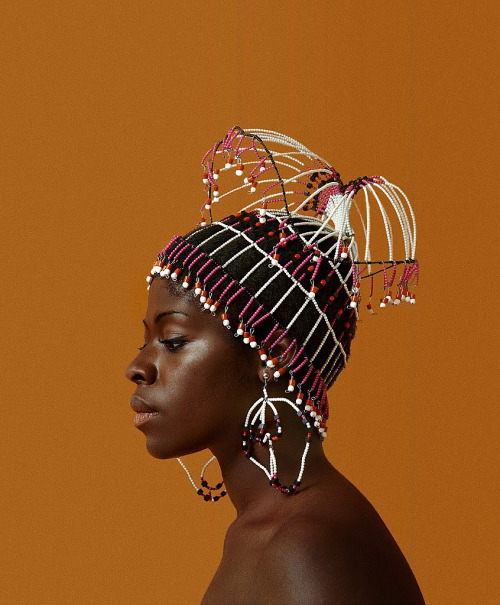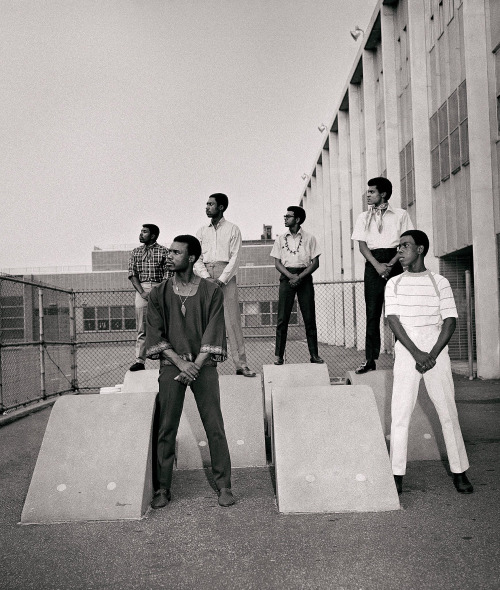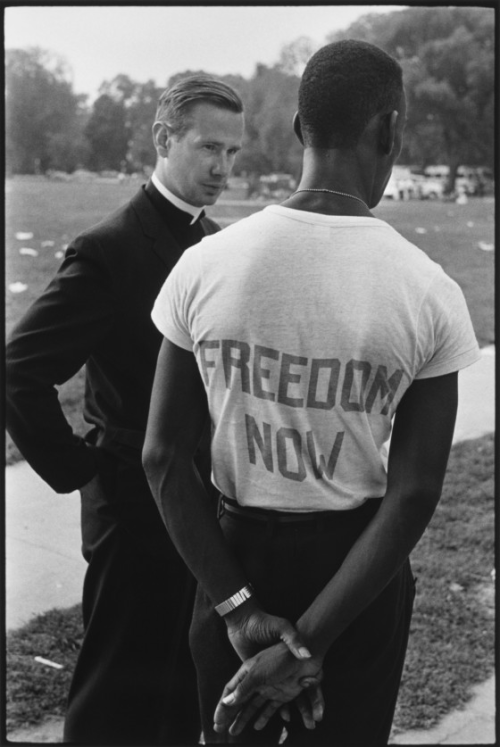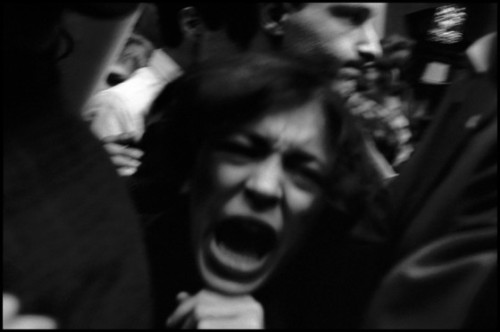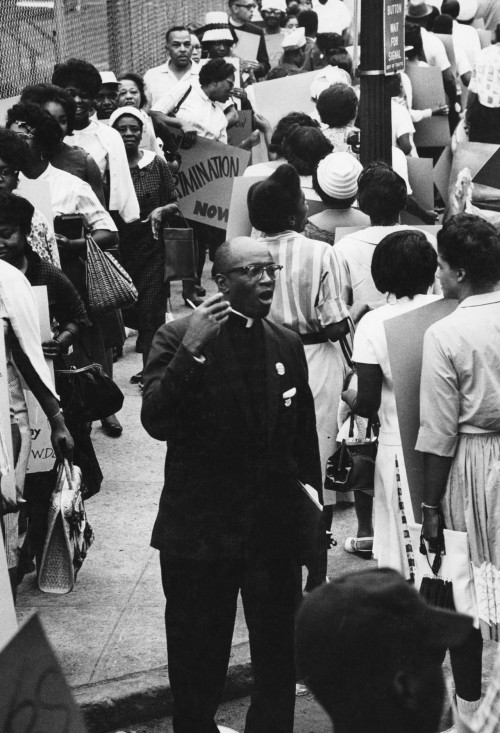

more at AfricanArchives
Harriet Tubman (1822-1913) quilt art by Bisa Butler
Born into slavery on Maryland's Eastern Shore in 1822, Tubman was an American abolitionist of slavery, lifelong humanitarian and civil rights activist. She showed the same zeal and passion for the campaign to attain women's suffrage after the American Civil War as she had shown for the abolition of slavery. (more read)
This quilted portrait of Harriet Tubman will be on display within Smithsonian National Museum of African American History and Culture(nmaahc)'s new exhibit titled Reckoning: Protest. Defiance. Resilience.

Harriet Tubman in 1911 via AfricanArchives
There are many symbols in this picture: heads bowed; shoes off; jacket opened; beads around neck; black gloves; arms raised. Although John Dominis’s iconic photograph has been misunderstood for decades as solely an image of Black Power, the three Olympians were trying to highlight basic human rights. America was in emotional, political, and social turmoil after the assassinations of Martin Luther King Jr. and Robert Kennedy in 1968. Addressing injustices and inequality were in the forefront of the Black Power movement. Tommie Smith and John Carlos are honored today, but were evicted from the Olympics by Avery Brundage, head of the American Olympic Committee, who had tolerated the Nazi salute in 1936 and Hitler’s request to ban American Jewish athletes from competing in Berlin, but not the Black Power salute in 1968.
A few days before Muhammad Ali’s death on June 3, 2016, Tommie Smith wrote him a letter. It reads:
“Dear Muhammad,
When I stood on the podium in Mexico City in 1968, you were with me. When I ran for gold medals, your spirit was the wind. When, throughout my life, I worked up the courage to speak out against systemic injustices in our society, your strength echoed in my voice. When I was told, ‘Don’t shake things up’ and ‘Don’t cause trouble,’ you were there saying, ‘Speak up. Get louder.’ When I wanted to quit—and we all flirt with quitting at some time—I would think about how many times you had had every reason in the world to say, ‘Cut the tape off. I’m done.’ You’ve always had little use for excuses. Ali, you taught many to stand. Whether it was on a podium or on principle, you showed the strength to stand—even when it was unpopular.”
John Dominis (American, 1921–2013). American track and field athletes Tommie Smith © and John Carlos ®, first and third place winners in the 200 meter race, protest with the Black Power salute as they stand on the winner's podium at the Summer Olympic games, Mexico City, Mexico, October 19, 1968. Australian silver medalist Peter Norman stands by, 1968; printed 2016. Courtesy of John Dominis/Getty Images
Peanuts’ 1st African American Character:
In America, after Martin Luther King Jr. was assassinated on April 4, 1968, the long-simmering problem of segregation and racial discrimination reached a boiling point.
One school teacher, Harriet Glickman, was so discouraged by what she saw in society, then she wrote to Schulz, urging him to introduce a black character into Peanuts.More
Harriet Glickman believed that Schulz’s comic strip could help shape American attitudes on race. The result of their correspondence was the character of Franklin, introduced to Peanuts fans in the summer of 1968.
Harriet Glickman recalled it later: “so much of Peanuts, I had taken Franklin for granted, but when we began the research for the 50th anniversary of his debut in the comic strip, I realized how much Sparky had to consider when he introduced a new character.”More ll Charles M. Schulz Museum
from African & Black History
—-
Next time some far-right talking head tries to say that “slavery wasn’t so bad”, we need to remind them of this; this is what slavery drove good human beings to do rather than submit to such absolute evil. _reply from @Sebastian2Blue
This is such a sad story. The choices so many Africans had to face rather than submit to indignity, slavery, inhumanity…. reply from @pinkykhoabane
Khalik Allah; Harlem, NYC, 2017 l at night time, without a flash l the 125th & Lexington series
“The only way of escaping a problem is by facing it. Averting our gaze is often how problems are deepened. The more you look at fear, the less you see it.”
Harlem, 2020/ 2013/ 2019 l the 125th & Lexington series ll Khalik Allah: one of the five Magnum nominees 2020
Allah’s photos are raw. Clearly, he doesn’t intend for them to be pretty snaps of the streets of New York. Instead, they capture the reality of life, the struggles, and the community. More Read
Martha Mae Ophelia Moon Tucker, who was married in 1952, always wanted to wear a wedding dress. But at the time Black women weren’t allowed in bridal shops.
Now 94, her dream is coming true. ll ABC News /2021
—–
Imagine, ladies, being in your twenties and knowing you cannot walk into a department store or bridal boutique. ll reply to ABC news from @ O_C_Chef_Girl
textile/fabric portrait of Malcolm X ll Bisa Butler
Bisa Butler’s portrait quilts capture personal/historical narratives of Black life. She strategically uses textiles, a traditionally marginalized medium, to interrogate the historical marginalization of her subjects. For her art, she uses an interdisciplinary method; historical/personal photographs inform her compositions and figural choices. l Art Institute of Chicago
© Eve Arnold (1962)/ Magnum Photos: On assignment to document the group, Eve Arnold followed the black nationalist movement’s members and leaders to meetings and rallies, and particularly, profiled a senior figure in the group who was to become its most recognizable figurehead of the time: Malcolm X.
Malcolm X was a hero figure to many who were tired of systemic racism, and widespread police and government brutality; “Be peaceful, be courteous, obey the law, respect everyone; but if someone puts his hand on you, send him to the cemetery.”
Juneteenth by Dustin Watson
In 2021, Juneteenth became a federal holiday of America celebrating end of slavery.
history: At the close of the Civil War, Gen. Gordon Granger delivers General Order No. 3 in Galveston, Texas, announcing the end of slavery in that state on June 19, 1865 — a day celebrated by people of African descent in the Americas & elsewhere as “Juneteenth.“— library of congress
The photo of the escaped slave “Whipped Peter” inspired Dustin Watson’s work above. ※ "Whipped Peter” was an enslaved African American who escaped from a Louisiana plantation in 1863, gaining freedom when he reached the Union camp near Baton Rouge. He joined the United States Colored Troops soon after their founding, and served as a soldier in the war.[wiki]
by Amanda Phingbodhipakkiya
2nd art: Breonna Taylor, a Black medical worker who was shot and killed by Louisville police officers in March 2020
Black Is Beautiful: Kwame Brathwaite
The Emergence of Black Culture and Identity; his work helped advance one of the most influential cultural movements of the 1960s,“Black Is Beautiful,” when black people turned to natural hairstyles and African-inspired clothing.-DIA
Derek Chauvin, a police officer at the time, was filmed kneeling on George Floyd’s neck for over nine minutes during his arrest last May. Floyd, a Black man, cried out repeatedly, “I can’t breathe.” But Chauvin didn’t stop kneeling on his neck.
The killing of George Floyd while in police custody caused public outrage and protests across the U.S. It also sparked worldwide protests against racism and excessive use of force by police.
On Apr. 20, 2021 Derek Chauvin was convicted of all three counts, second-degree murder, third-degree murder and second-degree manslaughter, in the killing of George Floyd. Chauvin sentencing hearing will be in eight weeks and he could spend decades in jail.

The U.S. President Joe Biden and Vice-President Kamala Harris called the Floyd family after the verdict. ‘At least now there’s some justice,’ President Biden told the family. And in nationally televised remarks, the president said, “Systemic racism is a stain on the whole nation’s soul.”

The U.S. Vice-President Harris urged lawmakers to pass the George Floyd bill aimed at reforming policing in the U.S. All cr. abc/bbc news/ pics cr. on it

Black In White America 1963-1965 by Leonard Freed
Photojournalist Leonard Freed’s photo essay. It shows the hopes, struggles, challenges, joy, and sorrow that Black people faced in the 1960s America.


